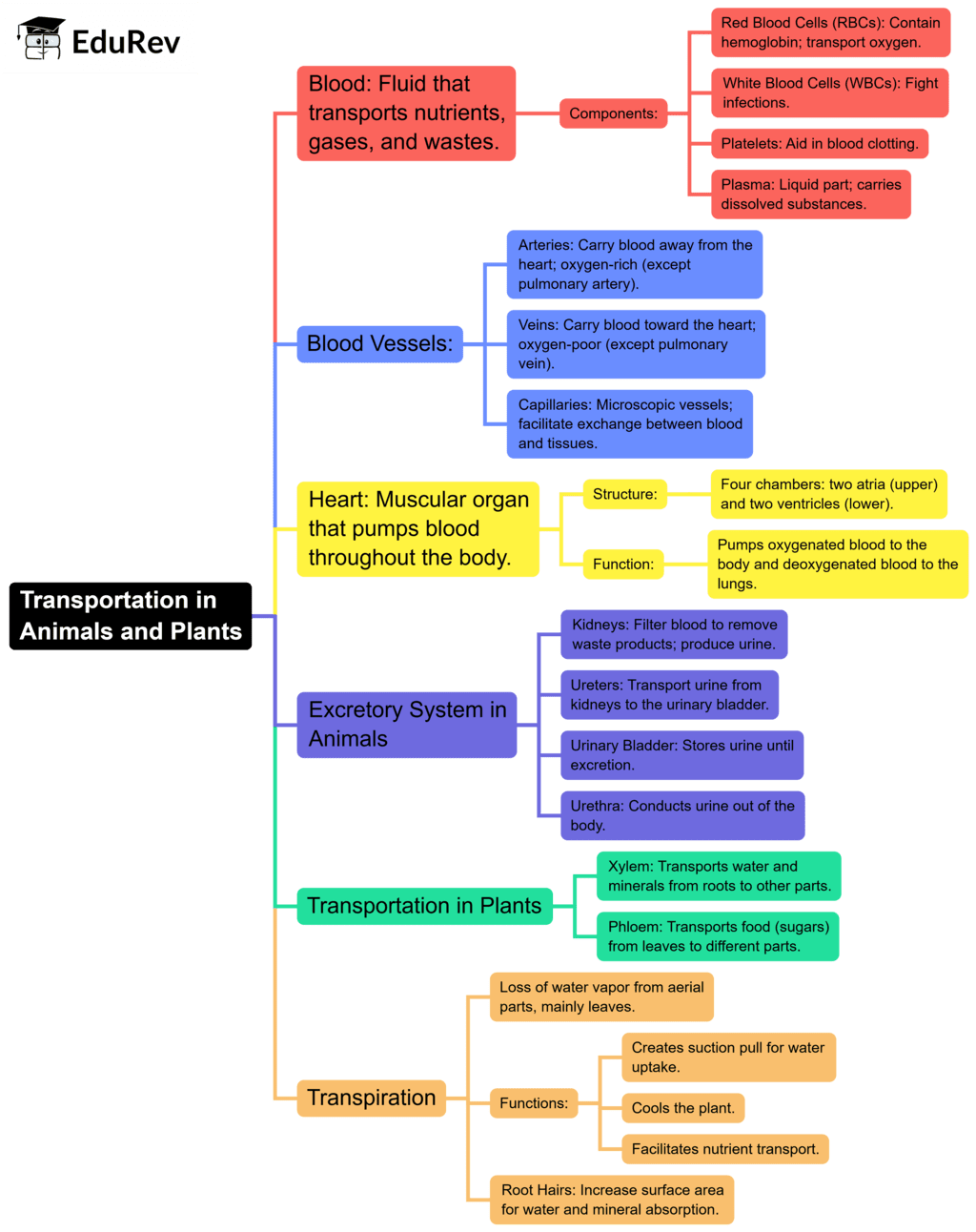Class 7 Exam > Class 7 Notes > Science Class 7 (Old NCERT) > Mind Map: Transportation in Animals and Plants
Mind Map: Transportation in Animals and Plants | Science Class 7 (Old NCERT) PDF Download

The document Mind Map: Transportation in Animals and Plants | Science Class 7 (Old NCERT) is a part of the Class 7 Course Science Class 7 (Old NCERT).
All you need of Class 7 at this link: Class 7
|
111 videos|435 docs|28 tests
|
FAQs on Mind Map: Transportation in Animals and Plants - Science Class 7 (Old NCERT)
| 1. What are the main modes of transportation in animals? |  |
Ans. Animals use several modes of transportation to move around. The primary modes include locomotion through walking, running, swimming, and flying. For instance, land animals like elephants and dogs walk or run, while aquatic animals such as fish swim using their fins. Birds and insects utilize wings for flying, enabling them to cover large distances quickly.
| 2. How do plants transport nutrients and water? |  |
Ans. Plants transport nutrients and water through specialized structures. The roots absorb water and minerals from the soil, which travel upward through the xylem, a type of vascular tissue. Simultaneously, the phloem, another vascular tissue, distributes sugars and other organic compounds produced during photosynthesis throughout the plant. This dual system ensures that all parts of the plant receive the necessary substances for growth and survival.
| 3. What is the significance of the circulatory system in animals? |  |
Ans. The circulatory system is vital for transporting oxygen, nutrients, hormones, and waste products throughout an animal's body. In vertebrates, this system typically consists of a heart, blood vessels, and blood. It plays a crucial role in maintaining homeostasis, supporting metabolic processes, and enabling communication between different organs and tissues, thus ensuring the overall health of the organism.
| 4. How do different environments influence transportation in animals? |  |
Ans. Different environments significantly affect how animals transport themselves. For example, animals in aquatic environments have adaptations like streamlined bodies and fins for efficient swimming, whereas terrestrial animals develop limbs suited for walking or running. Additionally, flying animals have lightweight bodies and wings, allowing them to navigate air currents. These adaptations are essential for survival, as they help animals find food, avoid predators, and reproduce in their respective habitats.
| 5. What are the roles of xylem and phloem in plant transportation? |  |
Ans. Xylem and phloem serve distinct but complementary roles in plant transportation. The xylem is responsible for transporting water and dissolved minerals from the roots to the rest of the plant, primarily through a process called transpiration. Conversely, the phloem transports organic compounds, mainly sugars produced by photosynthesis, from the leaves to other parts of the plant where energy is needed. Together, these vascular tissues ensure that plants efficiently transport essential substances for growth and energy.
Related Searches






















